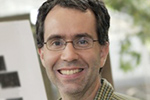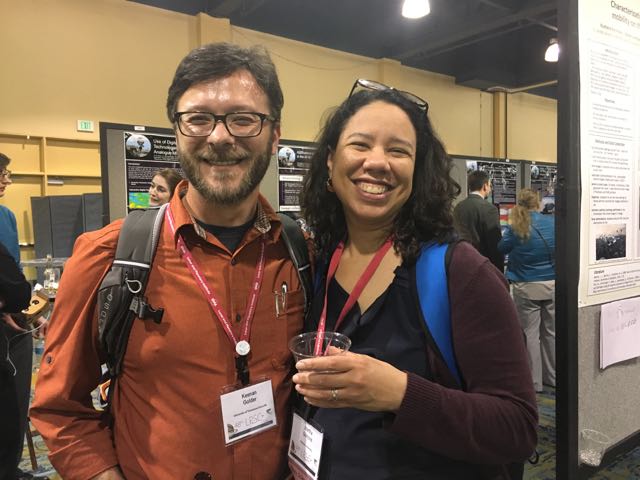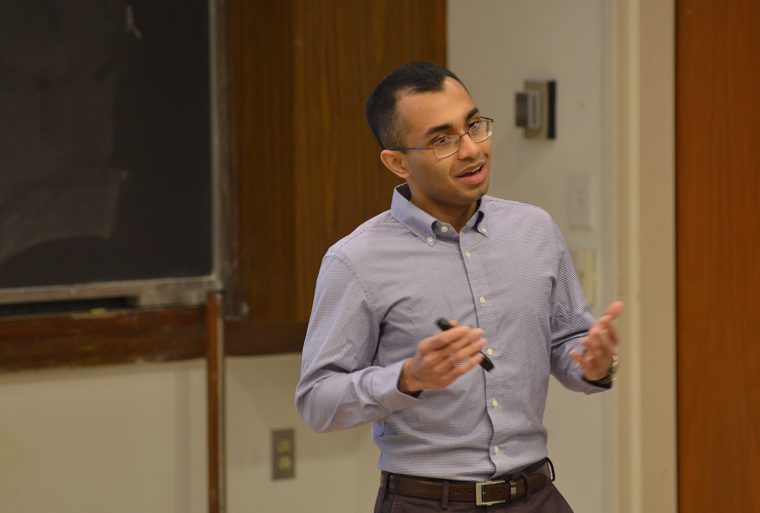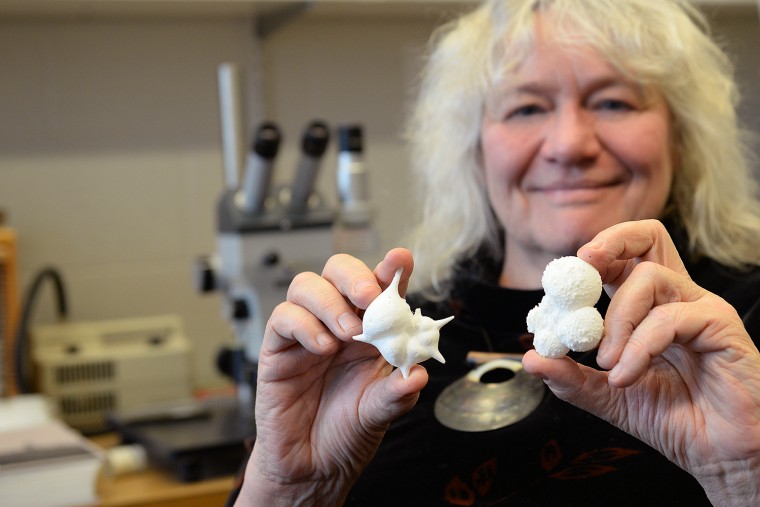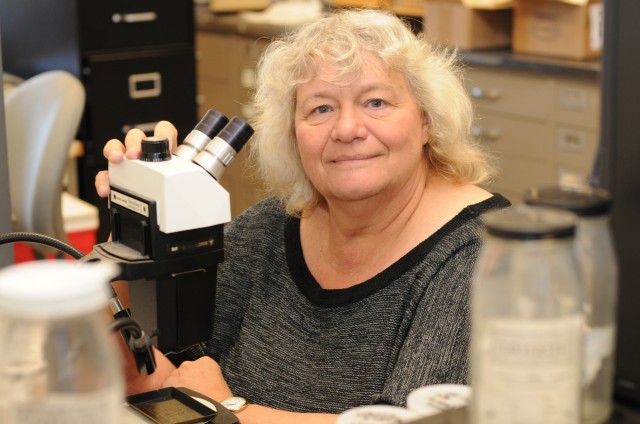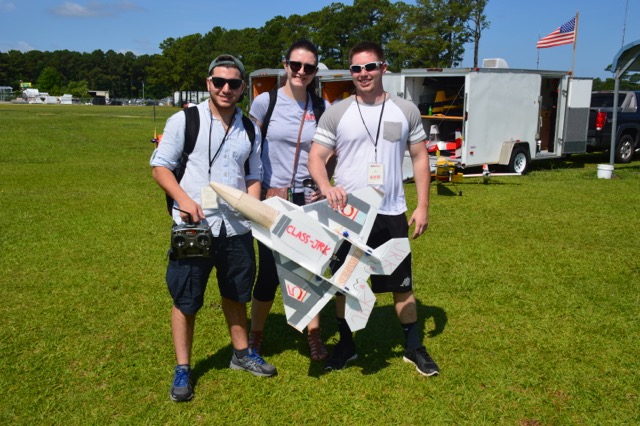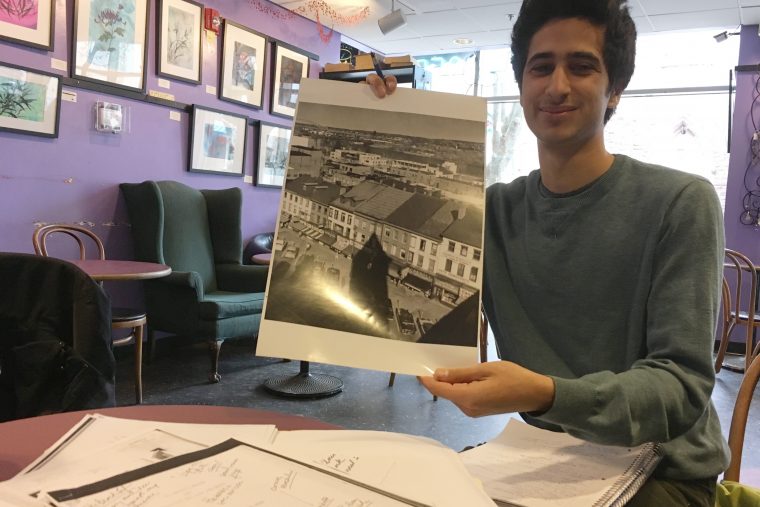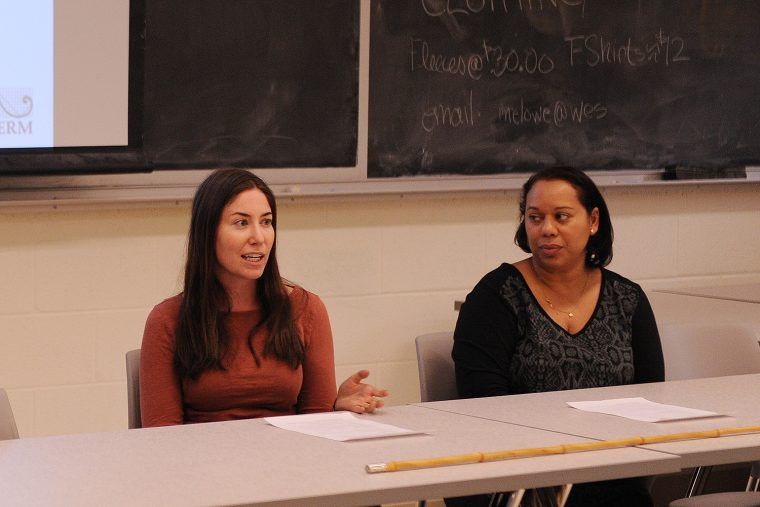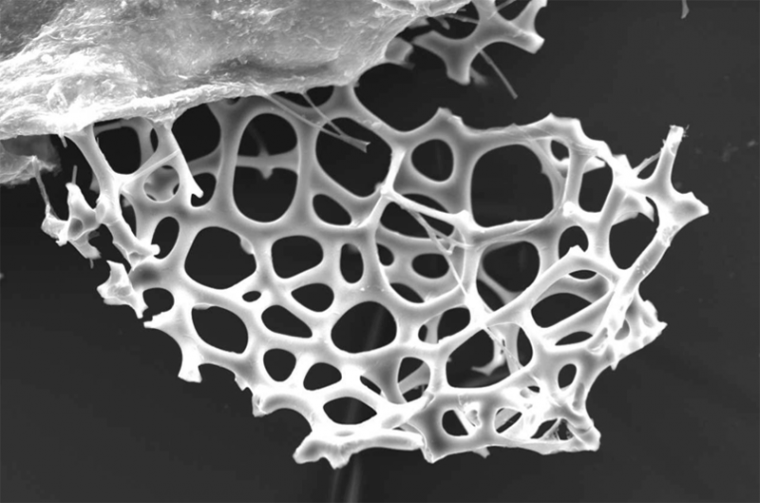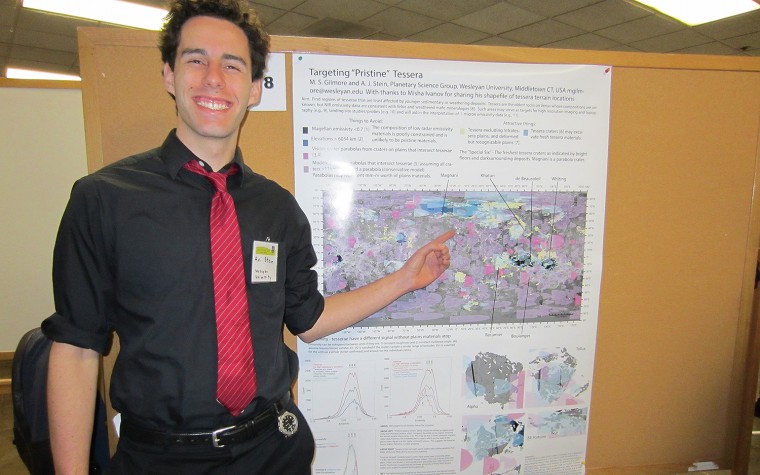New climate research by Dana Royer, professor and chair of earth and environmental sciences, finds that current carbon dioxide levels are unprecedented in human history and, if they continue on this trajectory "the atmosphere could reach a state unseen in 50 million years" by mid-century, according to an article in Salon. The carbon dioxide levels in the atmosphere today are ones that likely haven’t been reached in 3 million years. But if human activities keep committing carbon dioxide to the atmosphere at current rates, scientists will have to look a lot deeper into the past for a similar period. The…
A group of Wesleyan faculty, students and alumni attended the 48th Lunar and Planetary Science Conference in The Woodland, Texas March 20-24. The annual conference unites 2,000 international specialists in petrology, geochemistry, geophysics, geology and astronomy to present their latest research in planetary science over the course of several days. Professor of Earth and Environmental Sciences and the George I. Seney Professor of Geology Martha Gilmore coordinated Wesleyan's group. While at the event, she presented her work on the oldest rocks on Venus and Mars gully analogues on Earth. A number of her current graduate and undergraduate students attended and several…
On Feb. 8, John Hossain, a MA candidate from the Earth and Environmental Sciences Department, presented a talk on "The Role of Reverse Fault Geometry on Slip Rate Estimates" during the Graduate Speaker Series. Estimates of fault slip rates are an integral part of assessing seismic hazard because they affect estimates of earthquake renewal and moment release rates. For some faults, however, slip rate estimates vary among geodetic studies or between geodetic and geologic investigations. In his talk, Hossain explained why by using a series of numerical models. Graduate Speaker Series events are open to the entire Wesleyan community. (Photos…
For her outstanding efforts in pioneering studies in micropalaeontology and natural history, The Micropalaeontological Society (TMS) awarded Wesleyan's Ellen Thomas with the 2016 Brady Medal. The Brady Medal is TMS's most prestigious honor and is awarded to scientists who have had a major influence on micropalaeontology by means of a substantial body of research. Thomas was honored for "communicating to an extremely broad audience fascinating, impactful and often thought-provoking research" and "academic encouragement of students and peers over the years with [her] generosity of time in a very busy and successful career," noted TMS President F. John Gregory. Thomas, research professor…
Ellen Thomas, research professor of earth and environmental sciences, is the co-author of "Pteropoda (Mollusca, Gastropoda, Thecosomata) from the Paleocene-Eocene Thermal Maximum of the United States Atlantic Coastal Plain," published in Palaeontologia Electronica, Article 19 (3) in October 2016. The Paleocene Epoch lasted 65 to 54.8 million years ago and the Eocene Epoch lasted from 56 to 33.9 million years ago, and was a period of rapid global warming. The response of many organisms to the Paleocene-Eocene Thermal Maximum (PETM) has been documented, but marine mollusks are not known from any deposits of that age. For the first time, Thomas and her…
Four Wesleyan undergraduate students have received grants from NASA's Connecticut Space Grant Consortium. Astronomy major Hannah Fritze '18 was awarded $5,000 for an Undergraduate Research Fellowship Grant titled, “Searching for Intermediate Mass Black Holes in Ultraluminous X-ray Binaries.” This grant will support her research this coming semester on black holes with Roy Kilgard, support astronomer and research associate professor of astronomy. Avi Stein '17, who is majoring in astronomy, was awarded $1,000 for a Student Travel Grant. He will be presenting his research on Venus—conducted with Martha Gilmore, the George I. Seney Professor of Geology, professor of earth and environmental sciences—at…
During the fall semester, 17 Wesleyan students collaborated with a community partner to create a geographic information system and conduct data analysis and visualization related to the community partner’s objectives. GIS is a computer system for capturing, storing and displaying data related to positions on Earth's surface. The students, who are enrolled in the service-learning course E&ES 324 Introduction to GIS, presented their semester-long findings at a public presentation Dec. 8. "By partnering with a local group, the students are not only learning GIS skills, they're also helping our community," said the course's instructor Kim Diver, assistant professor of the…
On Nov. 18, the Department of Earth and Environmental Sciences (E&ES) hosted the 8th Annual Meeting of the Geological Society of Connecticut (GSC). The event featured a student scholarship wine-tasting fundraiser and a public science lecture called “The Real Jurassic Park in the Connecticut Valley,” by paleontologist Robbert Baker. During the meeting, Phillip Resor, associate professor of earth and environmental sciences, Martha “Marty” Gilmore, the George I. Seney Professor of Geology, were awarded the Joe Webb Peoples Award for their efforts in hosting the 2015 New England Intercollegiate Geologic Conference. The award recognizes those who have contributed to the understanding…
Three Wesleyan alumnae returned to campus Oct. 26 to speak to junior and senior earth and environmental science majors about “What to do with an E&ES Degree After Wes?” The panel included Lori Oakes-Coyne ’92, senior recruiter for Environmental Resources Management, Inc. in Boston; Maria Osorio ‘92, assistant commissioner of operations for New York City; and Emma Kravet ’09, education director for the Connecticut Forest and Park Association. Professor of Earth and Environmental Science Suzanne O’Connell organized the program to assist students in preparing for post-Commencement life. "Our alumni are incredibly loyal,” she notes, “And one way they help the…
Jan Hasselman ’91, a staff attorney with Earthjustice’s Northwest office in Seattle, serves as counsel for the Standing Rock Sioux tribe in their efforts to stop the construction of the Dakota Access Pipeline. An article in The Atlantic "The Legal Case for Blocking the Dakota Access Pipeline," asks "Did the U.S. government help destroy a major Sioux archeological site? The article is one of several in the media that highlight the work of the legal team and the questions they raise. At this time, the issue ongoing. Atlantic Associate Editor Robinson Meyer writes in his Sept. 9 article: "As part…
This summer, Stephen Devoto, professor of biology, professor of neuroscience and behavior, launched the inaugural Wesleyan Scientific Imaging Contest. The contest, which recognizes student-submitted images from experiments or simulations done with a Wesleyan faculty member that are scientifically intriguing as well as aesthetically pleasing, drew 35 submissions from the fields of physics, biology, molecular biology and biochemistry, psychology, earth and environmental science, chemistry and astronomy. Participants submitted an image along with a brief description written for a broad, scientifically literate audience. The entries were judged based on the quality of the image and the explanation of the underlying science. The first-place prize went…
Eight earth and environmental science E&ES 344 Advanced GIS students presented posters at the Northeast Arc Users Group Spring Spatial Technologies Conference, May 9 at the University of Massachusetts-Amherst. The posters highlighted the students’ semester-long research and service-learning projects incorporating applications of advanced geographic information systems skills. The project-based course E&ES 344 is taught by Kim Diver, assistant professor of the practice of earth and environmental sciences, and is part of the Academy for Project-Based Teaching and Learning hosted by the Center for Pedagogical Innovation. "The 14 students in the course conducted independent research projects, worked with faculty on their research…


